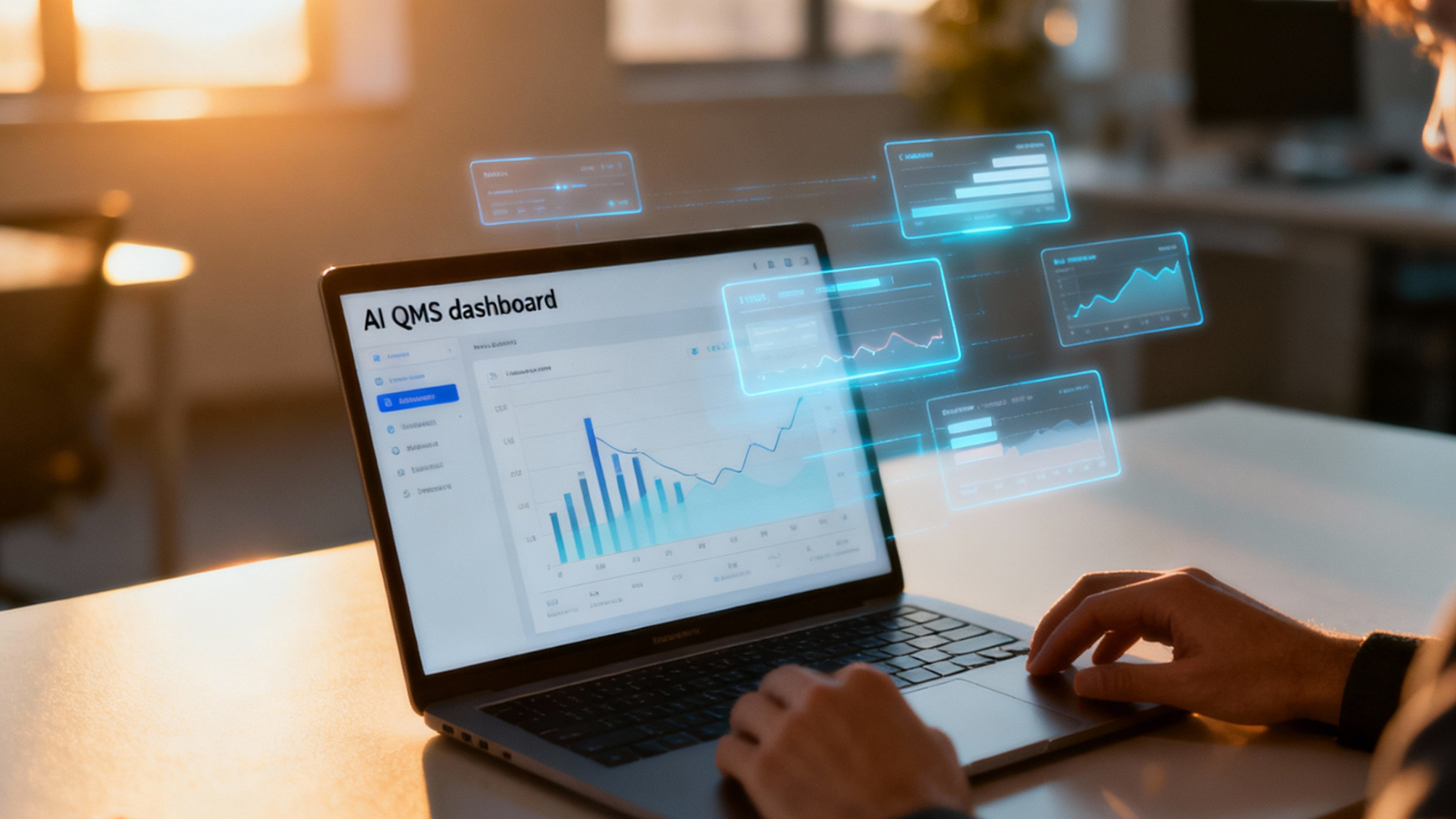The term reliability refers to the ability of a product or system to fulfil its intended function flawlessly and adequately. Reliability-centered maintenance (RCM) enables safer, more efficient, and more effective operation of assets. Asset failures are minimized and made predictable by this method.
RCM was first introduced by United Airlines. In the 1960s, the world's first Jumbo Jet aircraft were being built, and their crash rate was substantial. The aircraft needed to be made safer. Preventive maintenance practices, on the other hand, were quite costly.
In order to provide optimal aircraft maintenance requirements, reliability-centered maintenance was developed. The system was so successful that it was applied to all US Department of Defense aircraft and became a manual.
What is the Difference Between Preventive Maintenance and Reliability Centered Maintenance?
By definition, reliability-centered maintenance and preventive maintenance sound very similar, but they are fundamentally different. As a result of the research conducted on the development of RCM, two things became crystal clear.
-
There will always be some malfunctions, no matter how intensive the care is.
-
Maintenance based purely on asset age has a limited effect on breakdown rates.
Today, preventive maintenance is no longer only repetitive maintenance with limited information, as it once was when reliability-centered maintenance first emerged. Especially when managed with a CMMS.
CMMS support makes accessing data on failures and performance easier and avoids unnecessary maintenance. Check out our blog to learn more about How Preventive Maintenance Reduces Costs.
But there is still a difference between reliability-centered maintenance and preventive maintenance. Rather than addressing each asset's needs individually, preventative maintenance is organized around asset groups and types. In contrast, RCM involves examining assets closely and implementing a maintenance plan based on their needs and failure types. The use of limited resources is prioritized based on the importance of assets.
Advantages and Disadvantages of Reliability-Centered Maintenance Practice
Advantages
⌕ Understanding of Asset Operations: By using reliability-centered maintenance, you can predict the asset's current condition and trajectory more accurately. In this way, you can minimize maintenance costs while ensuring that the right equipment and assets are maintained. On the other hand, technicians are more involved in the asset process and shorten inspection times.
⌕ Effective Cost Management: Reliability-centered maintenance minimizes unnecessary routine maintenance and supports you in developing a better maintenance cost management strategy. By using RCM, you can decide when to replace equipment according to the condition of the equipment instead of relying on standards.
⌕ Enhanced Asset Performance: With reliability-centered maintenance, you will naturally experience fewer failures and longer asset life. The use of both reactive and proactive maintenance strategies while planning the system reduces unnecessary maintenance and inspection downtime. In other words, your assets will operate more efficiently and last longer.
⌕ Improved Occupational Safety and Health: Aside from efficiency, occupational safety and health are critical issues regarding malfunctions. A properly maintained facility is safer for your employees through the control of cutting, flammable, or toxic materials.
Disadvantages
⌕ Initial Cost: Considering the analysis you will conduct to determine maintenance priorities, the training you will need to provide to your technicians, and the software you will need to use to implement effective RCM management, the initial expenditure you will need to make to embark on this journey may seem high. It is not reasonable to expect a quick return from reliability-centered maintenance, and you should bear in mind that the transition to the new system may take time, and this is a long-term investment.
⌕ Unexpected Failures: It can be pretty surprising to see unexpected failures among the disadvantages, but as we mentioned earlier, reliability-centered maintenance involves both preventive and breakdown maintenance. A reactive maintenance program is more cost-effective than investing in assets that are rarely used or are nearing replacement. Due to this, it is likely that unexpected failures will occur with this approach.
7 Questions to Answer Before Implementing Reliability-Centered Maintenance
Reliability-centered maintenance requires an in-depth analysis. If you have decided to implement this system, you should outline your application, considering your maintenance resources and technological possibilities. RCM standards require that seven questions be answered satisfactorily and in the following order:
1. What are the functions and associated desired standards of performance of the asset in its present operating context?
This is the stage where you define the function of your asset. It is based on your machine's built capacity and expected performance.
Let's imagine you have a clipper. When all goes well, how much and how does your asset work? What amount of fabric does this machine cut at one time without sacrificing quality standards?
2. In what ways can it fail to fulfill its functions?
The fault may be that the asset does not fully or partially fulfill its function. An issue may arise from one part of the system or the entire system. Functional failures of an asset can also provide insight into what can happen to similar assets.
With a digital maintenance management system, you can access this information in just a few clicks.
3. What causes each functional failure?
Answering this question aims to identify the root causes of failure modes. If the asset's performance decreases, it may be due to dust blocking the vent, a loose bolt, or an operator error.
4. What happens when each failure occurs?
What is the effect of the fault occurring? By knowing how much a failure will cost, you can decide which investment to make in your assets.
Is there an electrical leak that could cause a fire? Or is it a blunting that doesn't stop the asset from running but affects its performance?
5. In what way does each failure matter?
Evaluating the possible consequences of failure helps you avoid the misconception that every failure is equally serious. With this information, you can determine whether a maintenance strategy is appropriate for a given asset. Failure consequences are examined in 4 groups.
6. What should be done to predict or prevent each failure?
The purpose of the sixth question in reliability-centered maintenance analysis is to assist you in determining a proactive maintenance strategy. It makes it much easier to answer this question if you have a record of your past work orders on hand. Your past work orders may indicate that the conveyor belt breaks and renews every six months, so you might consider performing a tension check every four months.
7. What should be done if a suitable proactive task cannot be found?
Sometimes preventative maintenance isn't the smartest approach. Imagine that you own a nearly obsolete asset that frequently breaks down. Creating maintenance orders at every rattling can make it work, but it is highly inefficient in terms of workforce utilization.
Instead, you can keep it running until it completely breaks down, and budget for a new asset beforehand. Consequently, renewal is no longer an unexpected expense and you avoid wasting money and time on delivery delays.
Conclusion
Answering the questions for each asset is essential for seeing the true impact of RCM. As a first step, you can address the most critical assets that would hurt your business the most if they become incapacitated.
The more information you have about your assets, the easier it is to determine your maintenance strategy. With so many questions and requirements, reliability-centered maintenance can seem daunting. You cannot be sure that you are making the right decisions if you plan to use data you have manually collected. Inevitably, there will be a loss of records of processes managed with pen and paper and spreadsheets.
If you want to reduce your maintenance costs and use your resources more efficiently, you might consider benefitting from a CMMS. As a result, reliability-centered maintenance practices will also be easier to track.
Get a free demo with our experts today to see how the Lena Maint CMMS can help you.











